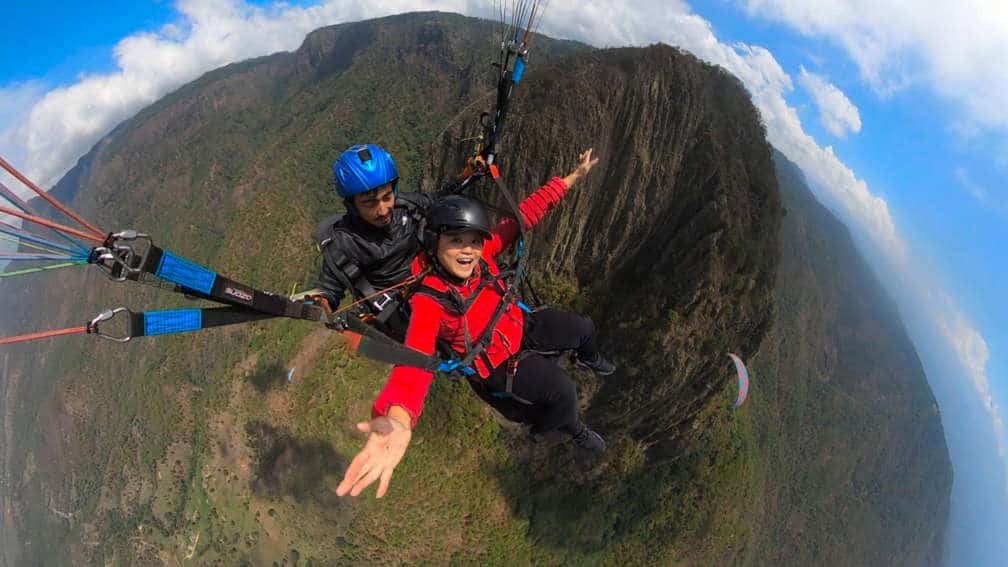The wind whips across my face as the paraglider whisks me high into the air. My feet, which were just running frantically off the edge of a mountain, now dangle 1,000 feet above ground. The town of Valle de Bravo sprawls into the distance — a patchwork of green fields blanketing the wooded mountains, punctuated by the deep-blue lake.
This is the Mexico I fell in love with. My real passion for this country wasn’t born on a beach in Cancún but in moments just like this: moments of breathless wonder, of heart-pounding thrill. It’s a feeling I’ve chased across the country, from the rugged slopes of Chihuahua’s Copper Canyon to the waterfall-studded region of Huasteca Potosina to the sultry jungles of Chiapas.
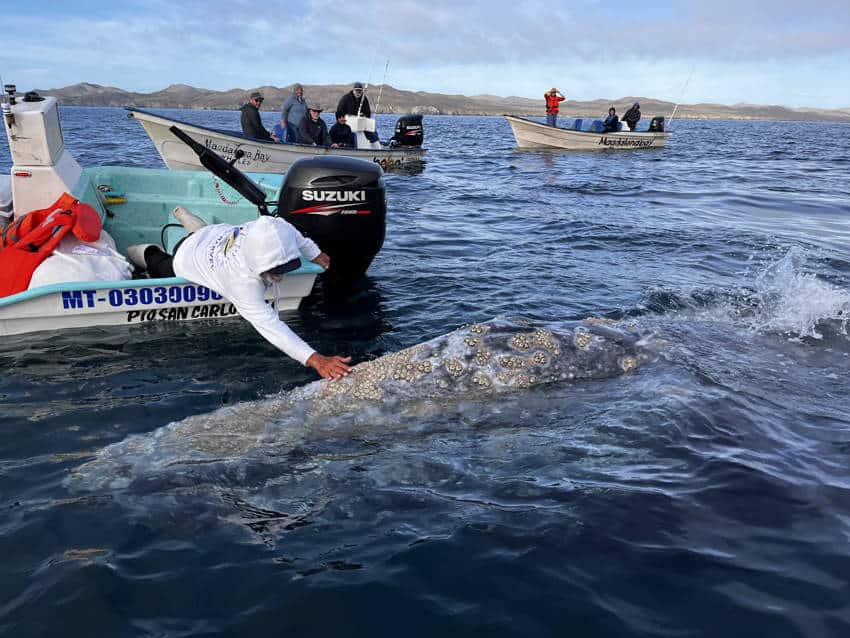
Mexico, teeming with life, is one of the world’s few megadiverse nations. Over 90 million hectares — an area larger than the United Kingdom and France combined — are designated natural protected areas. There is so much to explore beyond the busy coastlines and tourist-popular spots.
In this edition of the Where to Travel in Mexico 2025 series, we venture into the untamed and explore six of Mexico’s best spots for outdoor adventurers. Pack your boots, and get ready to head into the wild!
Valle de Bravo: For mountain bikers and paragliders
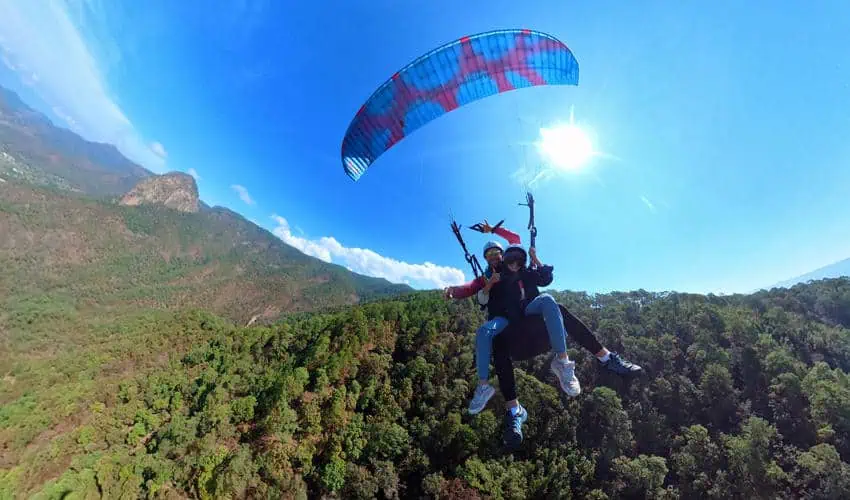
This lakeside town, snuggled in pine-forested mountains two hours south of Mexico City, is far more than just a pretty Pueblo Mágico. Its unique geography creates reliable thermals, making it a bucket-list destination for paragliders and hang gliders. As the owner of Flumen Paragliding School shares with me, it’s one of the few places on Earth where it’s possible to fly all year round, thanks to the perfect weather conditions.
Tandem paragliding, where you’re strapped to a professional pilot, requires no experience or specific fitness level. My 10-year-old daughter tried paragliding for the very first time in Valle de Bravo and could not get enough of it. Marko, her pilot, kept her safe, gave her clear instructions and made her feel confident throughout the flight. Upon landing, the first thing she said was, “Again! Again! I want to do it again!”
But Valle’s appeal isn’t just in the sky. The surrounding mountains are crisscrossed with world-class mountain biking trails. Living for Bikes rents out high-quality bikes and has a bike park where you can practice technical descents and jumps. Lake Avándaro itself is a playground for sailing, water skiing and stand-up paddleboarding. The calm and peaceful waters, together with the warm air that blows in from the coast of Michoacán, bring in excellent gusts for sailing.
Huasteca Potosina: For waterfall chasers
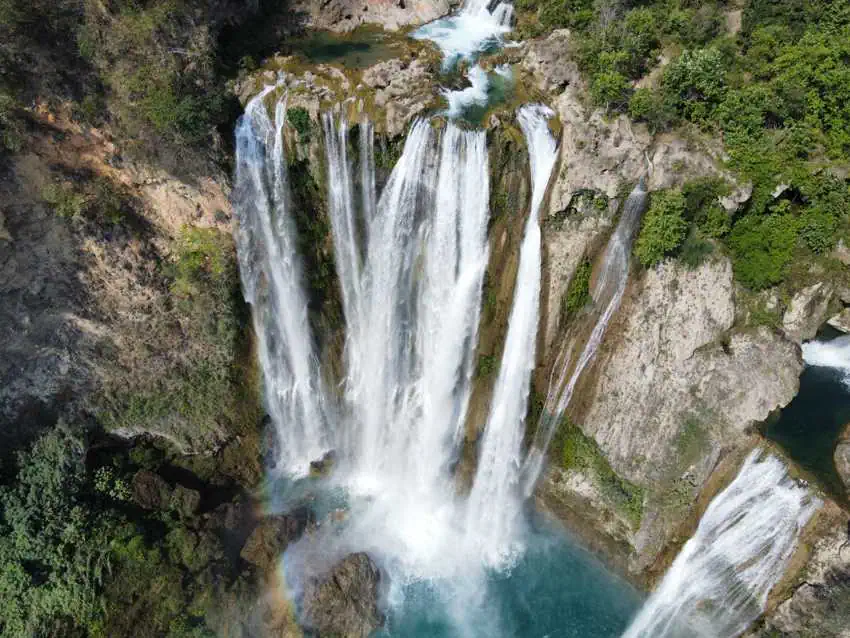
The Huasteca Potosina is a natural playground for those who love splashing around dreamy cascades and swimming in jade green natural pools. This region in the state of San Luis Potosí is a crumpled landscape of limestone karsts carved by impossibly turquoise rivers. The result is a wonderland of hundreds of waterfalls, caves and crystalline pools perfect for a high-octane itinerary.
Prepare to get wet and your heart pumping! A typical week involves white-water rafting on the Class III rapids of the Tampaón River, rappelling down the 167-foot Minas Viejas waterfall and cliff-jumping into the cerulean pools at Puente de Dios. To tone it down a notch, you can hop on a boat to get up close to Cascada Tamul — it does not flow year round; be sure to check before booking — or go ziplining and skybiking over the Cascada Micos.
Those with kids can also spend a frolicking good time at the family-friendly Cascada Tamasopo, complete with Tarzan swings and jumping boards. Just avoid visiting during the Mexican holidays, and you should have the waterfalls all to yourself.
El Potrero Chico: For rock climbers
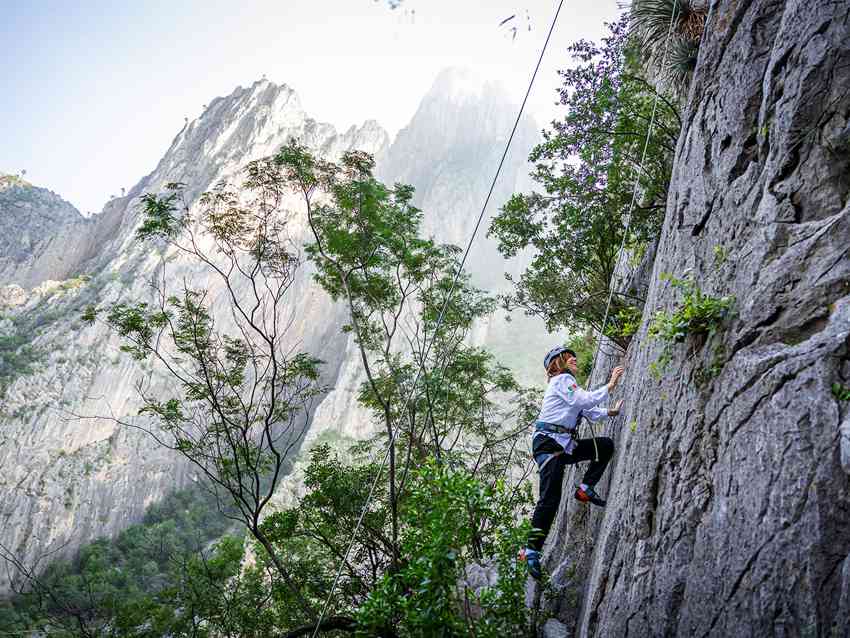
Just a two-hour drive from the metropolis of Monterrey, the earth splits open to reveal a canyon of sheer, towering limestone walls. This is El Potrero Chico, Mexico’s rock climbing paradise. The dramatic, spired peaks and seemingly endless rock faces attract climbers from across the globe. In fact, a climber friend who travels the world for the best rock calls Potrero Chico one of her favorites — so much so that she makes a point to return for a climbing trip every year.
What makes El Potrero Chico special is the incredible concentration of high-quality climbing. There are over 600 bolted routes, from beginner-friendly slabs to legendary, 23-pitch multi-day ascents that take you thousands of feet off the canyon floor. The limestone here is known for its grippy, textured surface filled with natural pockets that create an intuitive style of vertical face climbing, making it perfect for beginners.
Campsites like La Posada offer gear rentals and instruction, making a day on these famous walls achievable for almost anyone. Seasoned climbers often arrive with just a rope and harness. Once you arrive, everything you need — food, lodging and the climbs themselves — is within walking distance. Spend your days on the wall and evenings sharing stories with fellow adventurers; you’ll feel like a part of the climbing community within days.
Copper Canyon: For the back country hiker
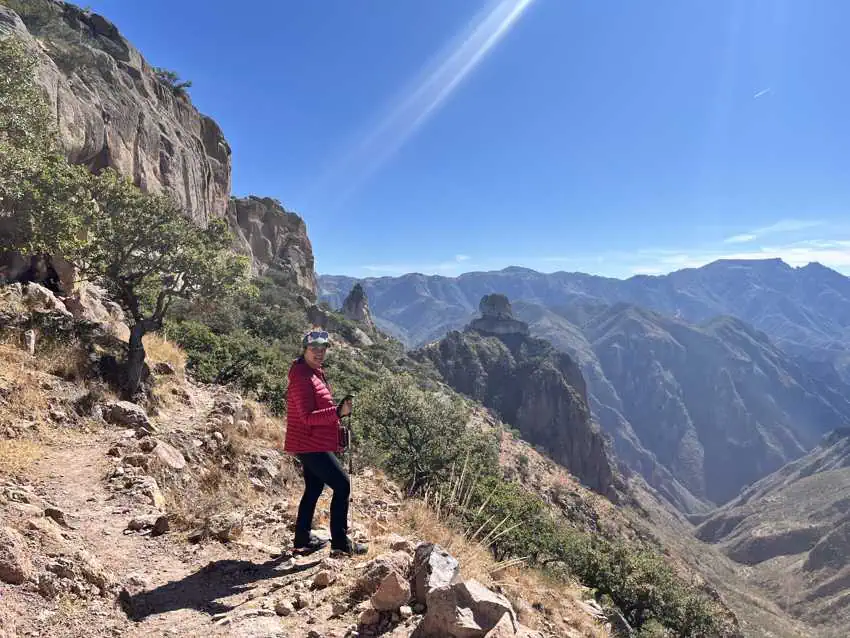
Sprawling across the northern state of Chihuahua, the Copper Canyon is a network of six interconnected canyons that are deeper — and in parts wider — than the Grand Canyon. This is the ancestral home of the Rarámuri (Tarahumara) people, best known for their legendary long-distance running abilities. I saw this firsthand when I met Rarámuri guide Lorenzo, one of the incredible athletes who has tackled the annual 80-kilometer Caballo Blanco ultramarathon, a grueling race that snakes up and down the canyon’s steep trails.
The best way to get around Copper Canyon is on board the El Chepe train, a scenic rail journey that weaves through rural towns and the imposing mountains, even teetering on the canyon rim in some parts. The rail line itself is an engineering marvel, stretching over 656 km of track and 37 bridges, it took over 60 years to build. While the train offers spectacular views, the real magic happens when you get off and hike into the canyon’s depths.
Base yourself in a town like Divisadero and arrange guided hikes from there. Spend a day at the nearby Parque de Aventura Barrancas del Cobre, home to one of the world’s longest ziplines. You can also do a multi-day hike down to the remote canyon-floor villages of Batopilas or Urique. The journey from the pine forests to the subtropical riverbeds will help you gain a profound appreciation for the Rarámuri’s connection to this landscape.
Loreto: For sea kayakers and divers
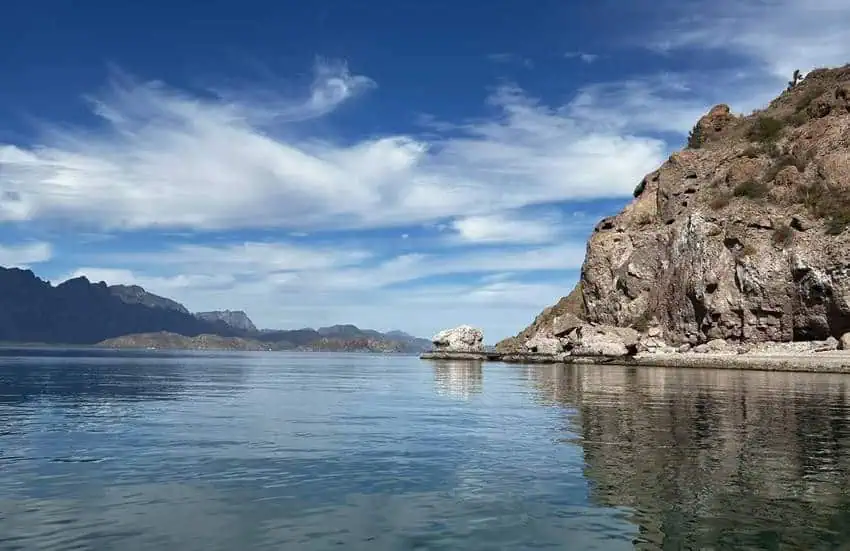
For underwater adventurers, the Baja California Peninsula is a superhighway for magnificent marine animals such as the whale shark and mobula ray. Here, the deep blue of the Pacific meets the rich waters of the Gulf of California, creating a theater for some profound wildlife encounters. It’s for good reason that world-famous oceanographer Jacques Cousteau named this “the world’s aquarium.”
The heart of Baja’s marine adventures lies in Loreto, a tranquil town and gateway to Bahía de Loreto National Park. Its calm, protected waters and chain of uninhabited islands make it a top-notch sea kayaking and scuba diving destination. If you’re looking to challenge yourself, sign up for the multi-day kayaking expedition, paddling from Isla Danzante to Isla Carmen. You’ll spend your nights camping under a star-dusted sky, miles from civilization, and your days gliding over crystalline waters, spotting dolphins, sea lions and, in winter, majestic blue whales.
Just two hours south of Loreto lies Magdalena Bay, an excellent spot to see gray whales from January to late March. From a small panga boat, my family had an incredible wildlife experience: a pair of curious mothers and their newborn calves approached our boat, close enough to be touched, lingering for almost 30 minutes. It was a transformative experience that truly connected us to these gentle giants. Note that these whale interactions are entirely whale-initiated and closely regulated to ensure no harm or stress is caused to the animals.
Pico de Orizaba: For hardcore mountaineers
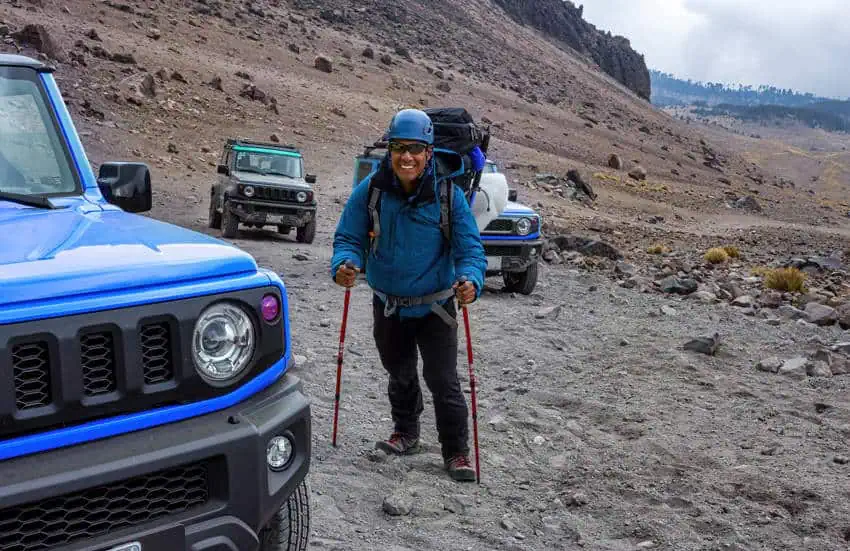
Rising imposingly between the states of Veracruz and Puebla, Pico de Orizaba is Mexico’s highest peak and North America’s third highest. At a breathtaking 18,491 feet (5,636 meters), this dormant volcano offers a serious, non-technical mountaineering challenge that rewards climbers with unparalleled views stretching from the central highlands to the Gulf of Mexico.
But this is no casual day hike. Only experienced hikers with the right equipment and skills should attempt to climb this mountain, also known as Citlaltépetl. Summiting it is a two-day affair requiring proper acclimatization in a base town like Tlachichuca. It’s important to go with a reputable expedition company like 3Summits; they know the routes intimately and will manage the logistics and monitor for altitude sickness.
You’ll first start with a predawn alpine start, trekking up scree slopes before strapping on crampons and wielding ice axes to navigate the Jamapa Glacier. The final push to the crater rim is a grueling test of physical endurance and mental fortitude, but the prize — a 360-degree sunrise from the roof of Mexico — is a major achievement for any aspiring mountaineer.
What’s right for each type of traveler?
We’ve put together a table summarizing which destination would suit travelers based on their experience in Mexico.
Beginner travelers are those with limited international experience; maybe this is their first trip to Mexico. Ideal for first-timers who prefer margaritas with training wheels. These travelers stick to well-trodden paths, mastering “¿Dónde está el baño?” while clutching a phrasebook. They thrive in destinations where guacamole arrives with optional spice and the hotel staff speak Google Translate.
Intermediate travelers are those with some international experience who can handle moderate language barriers and cultural differences. Ready to trade resorts for real-deal experiences, these travelers navigate cobblestone streets without face-planting. They’ve graduated to ordering “tres tacos al pastor” without pointing and can haggle for a sombrero in Oaxaca’s markets… but still overpay by 20%.
Advanced travelers are those with extensive experience navigating complex destinations independently. These wanderers treat Mexico like a choose-your-own-adventure novel written in Spanglish. They’ve adopted a street dog named Churro, debate the merits of different artisanal mezcals and know which mercado stall has the best tamales oaxaqueños.
![]()
Nellie Huang is a professional travel writer and author based in San Miguel de Allende with her family. She has contributed to BBC Travel, CNN, International Business Times, and National Geographic, and co-authored Lonely Planet’s 2025 Mexico guide. Read about her adventures worldwide on wildjunket.com and follow her updates on Instagram @wildjunket.

